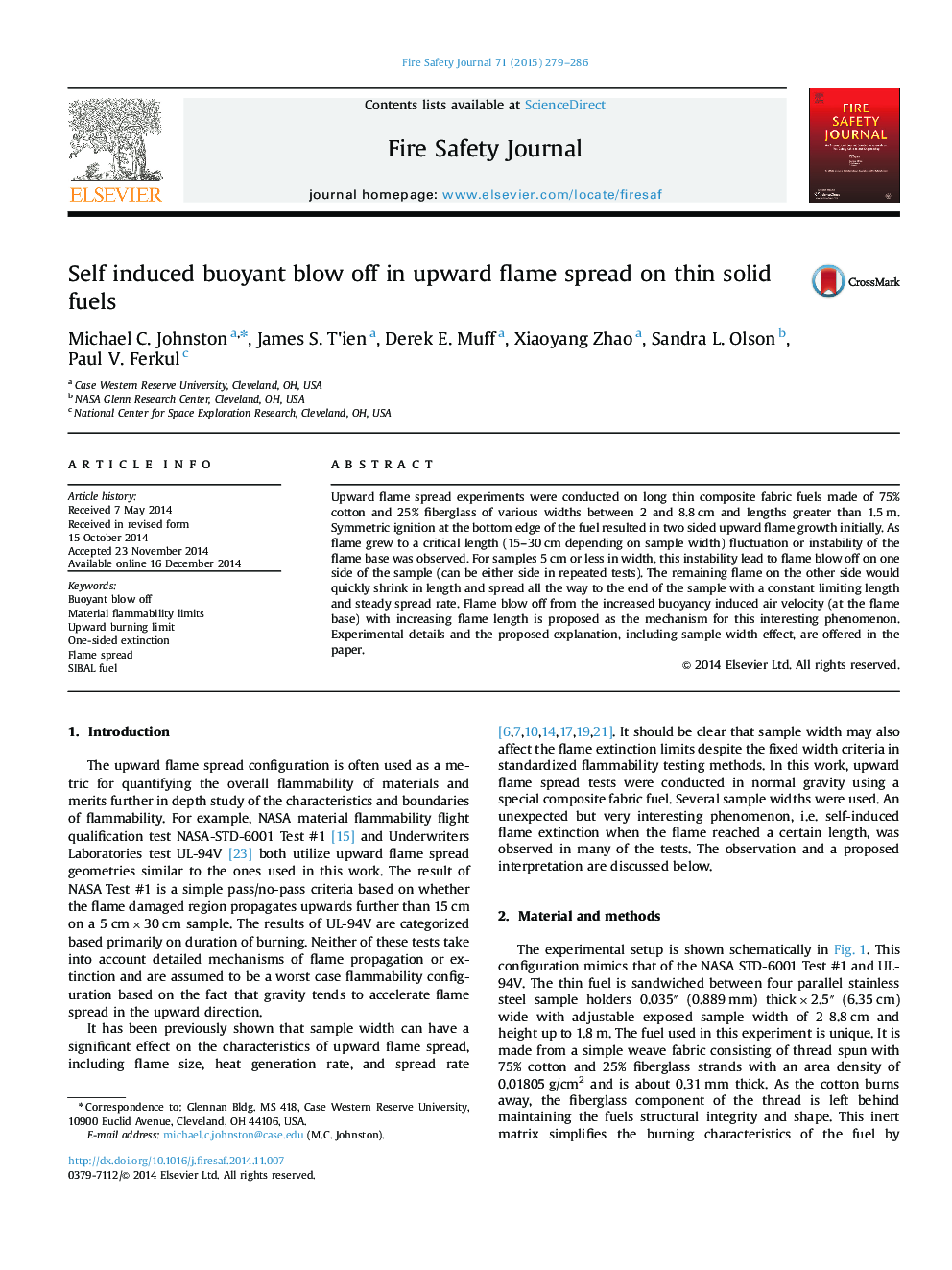| Article ID | Journal | Published Year | Pages | File Type |
|---|---|---|---|---|
| 269802 | Fire Safety Journal | 2015 | 8 Pages |
•Upward flame spread experiments were conducted on thin fabric of various widths.•One sided flame extinction was observed for sample widths less than 5 cm.•Extinguishing flames were from large seemingly robust fires.•Extinction mechanism is proposed based on blow off from buoyancy driven entrainment.•Simulation flow field graphs are discussed to support proposed mechanism.
Upward flame spread experiments were conducted on long thin composite fabric fuels made of 75% cotton and 25% fiberglass of various widths between 2 and 8.8 cm and lengths greater than 1.5 m. Symmetric ignition at the bottom edge of the fuel resulted in two sided upward flame growth initially. As flame grew to a critical length (15–30 cm depending on sample width) fluctuation or instability of the flame base was observed. For samples 5 cm or less in width, this instability lead to flame blow off on one side of the sample (can be either side in repeated tests). The remaining flame on the other side would quickly shrink in length and spread all the way to the end of the sample with a constant limiting length and steady spread rate. Flame blow off from the increased buoyancy induced air velocity (at the flame base) with increasing flame length is proposed as the mechanism for this interesting phenomenon. Experimental details and the proposed explanation, including sample width effect, are offered in the paper.
